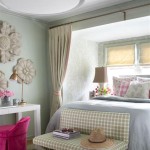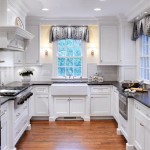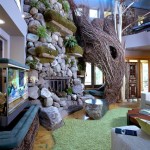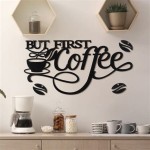The Enduring Appeal of Art Vases in Home Decor
Art vases, objects seamlessly blending artistic expression and functional design, have maintained a consistent presence in home decor for centuries. Their appeal stems from their capacity to enhance aesthetic environments, serve as focal points, and complement existing design schemes. Understanding the multifaceted role of art vases requires exploring their historical context, diverse styles, and practical applications within interior spaces.
The history of vases is rich and varied, tracing back to ancient civilizations where functionality and artistry were intrinsically linked. Early examples, crafted from materials like clay and stone, served practical purposes such as storing liquids and food. However, even these utilitarian objects were often adorned with decorative elements, reflecting the cultural values and artistic sensibilities of the time. As civilizations advanced, so did the craftsmanship and artistry of vase production. The Greeks, for instance, developed sophisticated techniques for ceramic production, creating vases that were both structurally sound and visually stunning. These vessels, often decorated with mythological scenes and geometric patterns, were highly valued and used in both domestic and ceremonial contexts.
Throughout history, different cultures have contributed to the evolution of vase design. The Romans adopted and adapted Greek styles, incorporating their own aesthetic preferences. In Asia, particularly in China and Japan, vase production reached unparalleled levels of sophistication. Chinese porcelain vases, renowned for their delicate craftsmanship and intricate designs, became symbols of status and refinement. Similarly, Japanese ceramic traditions, such as Raku ware and Imari ware, produced vases that were highly prized for their unique glazes and artistic expression. The Renaissance in Europe saw a revival of classical styles, with vases drawing inspiration from Greek and Roman forms. Artists and craftsmen experimented with new materials and techniques, creating vases that were both functional and aesthetically pleasing. The Art Nouveau and Art Deco movements of the late 19th and early 20th centuries further pushed the boundaries of vase design, embracing organic forms, stylized motifs, and innovative materials. Today, the art vase continues to evolve, reflecting contemporary artistic trends and technological advancements.
Variety of Styles and Materials
The vast array of art vases available today reflects the diverse range of artistic styles and cultural influences that have shaped their evolution. Categorizing vases based on style offers a convenient framework for understanding their aesthetic characteristics. Classical vases, for example, typically feature symmetrical forms, clean lines, and ornamentation inspired by Greek and Roman designs. These vases often incorporate motifs such as acanthus leaves, scrolls, and geometric patterns. Modern vases, in contrast, tend to embrace minimalism, asymmetry, and abstract forms. They often prioritize functionality and simplicity, with an emphasis on clean lines and geometric shapes.
Contemporary vases encompass a broad spectrum of styles, reflecting the diverse artistic trends of the present day. These vases may incorporate elements of abstract expressionism, pop art, or street art. They often feature bold colors, unconventional materials, and experimental forms. Vintage vases, which can range from Victorian-era pieces to mid-century modern designs, offer a glimpse into past eras and their unique aesthetic sensibilities. These vases often exhibit intricate details, ornate embellishments, and period-specific motifs. The materials used in vase construction also play a significant role in their aesthetic appeal and overall design. Ceramic vases, crafted from clay and fired at high temperatures, are among the most common and versatile types. Ceramic offers a wide range of possibilities in terms of shape, size, and surface decoration. Glass vases, known for their transparency and reflective qualities, can add a touch of elegance and sophistication to any space. Glass vases can be clear, colored, or decorated with intricate designs. Metal vases, constructed from materials such as brass, copper, or stainless steel, offer a sleek and contemporary aesthetic. Metal vases are often chosen for their durability and resistance to corrosion.
Art vases can also be made from wood, stone, or even recycled materials. Wooden vases often feature natural textures and organic forms, adding a touch of warmth and earthiness to a room. Stone vases, carved from materials such as marble or granite, exude a sense of solidity and timelessness. Vases made from recycled materials, such as glass bottles or plastic containers, offer a sustainable and eco-friendly option. Each material lends a unique character to the vase, influencing its texture, color, and overall aesthetic. The choice of material should be carefully considered in relation to the intended style and purpose of the vase.
Beyond the basic materials, surface treatments and decorative techniques further enhance the visual appeal of art vases. Glazes, used to coat ceramic vases, can create a wide range of colors, textures, and finishes. Textures, such as matte, gloss, or crackle, contribute to the tactile and visual interest of the vase. Hand-painted designs, often featuring floral motifs, landscapes, or abstract patterns, add a personal and artistic touch. Decals, applied to the surface of the vase, can create intricate designs or patterns. Etching, a technique that involves carving designs into the surface of the vase, can create a sense of depth and dimension. The possibilities for surface decoration are virtually endless, limited only by the artist's imagination and skill.
The Practical Application of Art Vases in Interior Design
Art vases transcend mere ornamental objects; they serve as integral components within a comprehensive interior design strategy. Their capacity to enhance the aesthetic appeal of a space stems from their versatility in placement and their ability to complement existing design elements. One of the primary functions of an art vase is to serve as a focal point within a room. A strategically placed vase can draw the eye and create a sense of visual interest. Larger vases, particularly those with striking designs or vibrant colors, are often ideal for this purpose. They can be positioned on mantels, console tables, or pedestals to create a dramatic effect. Smaller vases, arranged in groups or clusters, can also serve as focal points, adding a touch of whimsy and charm to a space. Consider using vases with complementary colors and textures to create a visually appealing arrangement.
The strategic use of color plays a pivotal role in integrating art vases into a cohesive design scheme. Vases can be used to introduce pops of color into a neutral space or to complement existing color palettes. A vase with a bold color, such as red or yellow, can add a sense of energy and excitement to a room. A vase with a muted color, such as gray or beige, can create a sense of calm and tranquility. Consider the overall color scheme of your room and choose vases that will enhance and complement it. For example, a blue vase might be a perfect complement for a room with cool tones, while an orange vase could add warmth to a room with warm tones.
The scale and proportion of a vase are also crucial considerations. A vase that is too large for a space can feel overwhelming, while a vase that is too small can get lost in the surroundings. Consider the size of the room and the furniture in it when choosing a vase. A large vase might be appropriate for a spacious living room, while a smaller vase might be better suited for a bedroom or office. The shape of the vase can also influence its impact on a space. Tall, slender vases can add a sense of height and elegance, while short, round vases can create a sense of stability and groundedness. Experiment with different shapes and sizes to find the perfect vase for your space.
Beyond their aesthetic contributions, art vases also offer practical benefits. They can be used to display fresh flowers, adding a touch of nature and vibrancy to a room. The choice of flowers can further enhance the overall aesthetic of the space. For example, a vase filled with roses can create a sense of romance and elegance, while a vase filled with sunflowers can add a touch of cheerfulness and optimism. Vases can also be used to display dried flowers, branches, or other decorative elements. These arrangements can add texture and visual interest to a room, particularly during the colder months. Furthermore, vases can be used as containers for candles or potpourri, adding fragrance and ambiance to a space. Scented candles can create a relaxing and inviting atmosphere, while potpourri can add a touch of freshness and natural fragrance.
The placement of art vases within a home can also influence the overall flow and balance of the space. Vases can be used to create symmetry and visual harmony. Placing matching vases on either side of a fireplace or console table can create a sense of balance and order. Vases can also be used to create asymmetry and visual interest. Arranging vases of different shapes and sizes in a grouping can add a touch of whimsy and spontaneity. Consider the overall layout of your room and experiment with different placements to find the most visually appealing arrangement. Ultimately, the successful integration of art vases into home decor requires a careful consideration of style, material, color, scale, and placement. By understanding the principles of design and experimenting with different combinations, one can create a space that is both aesthetically pleasing and functionally optimized.
Maintaining and Displaying Art Vases
Preserving the beauty and integrity of art vases necessitates appropriate maintenance and thoughtful display practices. Different materials require specific cleaning methods to prevent damage and ensure their longevity. For ceramic vases, gentle cleaning with a soft cloth and mild soap is generally recommended. Harsh chemicals or abrasive cleaners should be avoided, as they can scratch or damage the glaze. Stains can often be removed with a paste of baking soda and water, applied gently and rinsed thoroughly. Glass vases, prone to water spots and fingerprints, benefit from regular cleaning with a glass cleaner and a soft cloth. Avoid using abrasive sponges or scouring pads, as they can scratch the surface of the glass. Metal vases can be cleaned with a metal cleaner and a soft cloth. It is important to choose a cleaner that is appropriate for the specific type of metal. Wooden vases, sensitive to moisture, should be dusted regularly with a soft cloth. Avoid using water or cleaning solutions, as they can damage the wood. Stone vases, often porous, should be sealed to prevent staining and water damage. A stone sealer can be applied according to the manufacturer's instructions. In general, dusting vases regularly prevents the buildup of dirt and grime, maintaining their aesthetic appeal.
Proper display is equally crucial to safeguarding art vases from damage. Direct sunlight can cause fading or discoloration, particularly in vases made from sensitive materials such as glass or certain ceramics. Similarly, extreme temperature fluctuations can cause cracking or warping. Avoid placing vases near heat sources, such as radiators or fireplaces, or in areas that are exposed to direct sunlight for extended periods. Stable surfaces are essential to prevent accidental tipping or breakage. Place vases on level surfaces, away from edges or areas where they are likely to be bumped or knocked over. Using felt pads or rubber feet underneath vases can provide additional stability and prevent scratching of the surface beneath. High-traffic areas should be avoided for displaying delicate or valuable vases. Choose locations that are less likely to be disturbed or bumped into. Consider using display cases or shelves to protect vases from dust and damage, especially for particularly valuable or fragile pieces. These cases can also provide a controlled environment, protecting the vases from changes in temperature and humidity.
In addition to these material-specific considerations, general handling practices contribute significantly to the longevity of art vases. When handling vases, always use both hands to provide adequate support and prevent accidental dropping. Avoid lifting vases by their rims or handles, as this can put stress on those areas and cause breakage. When moving vases, empty them first to reduce their weight and minimize the risk of damage. Wrap vases in protective materials, such as bubble wrap or packing peanuts, to cushion them during transport. Finally, storing vases properly when not in use ensures their long-term preservation. Clean vases thoroughly before storing them to remove any dirt or debris. Wrap vases individually in protective materials, such as bubble wrap or acid-free paper, to prevent scratching or damage. Store vases in a cool, dry place, away from direct sunlight and extreme temperatures. Avoid stacking vases on top of each other, as this can put stress on the lower vases and cause breakage.

Creative Ceramic Morandi Vases S Vase Art For Home Decor China Decoration And Holiday Made In Com

Nordic Art Vase Ceramic Abstract Face Human Flower Aesthetic Table Home Decor

Jual Nordic Lady Statue Sculpture Decorative Vase Durable Resin Flower Art Decor Dining Table Centerpiece Vases Home Accents For Living Room Bedroom Di Er Homyl Shehen Indonesia Blibli

Creative Ceramic Morandi Vases S Vase Art For Home Decor China Decoration And Holiday Made In Com

Modern White Resin Flower Vase Sculpture Home Decorative Figurine Object Desk Decor Art Homary

Rustic Home Decor Abstract Painting Antique Ethnic Vases Set

Vases Ceramic Vase Home Decor Room Ornament Modern Wedding Decoration Desktop Art Flower Decorations Joom

Dried Flower Vases Retro Ceramic Ornaments Artistic Decorative For Home Living Room Decor Temu Germany

Art Vase Ceramic Vases Home Decor Resin Artwork Modern

Free On Modern Ceramic Shape Flower Vase Sculpture Home Desk Decor Art Living Room Bedroom Homary In 2025 Decorated Jars Vases







